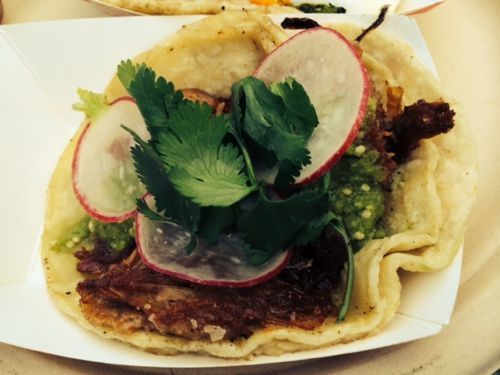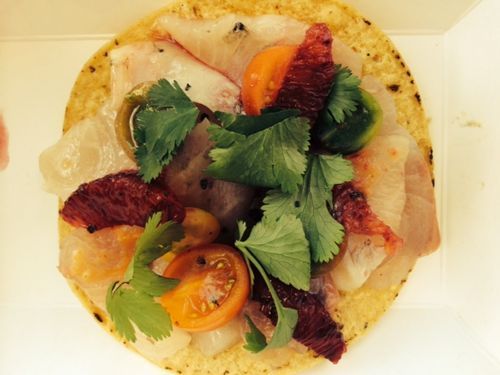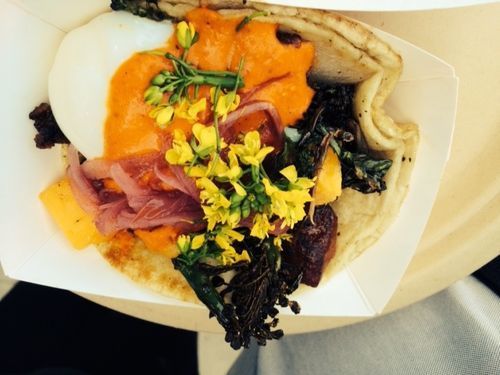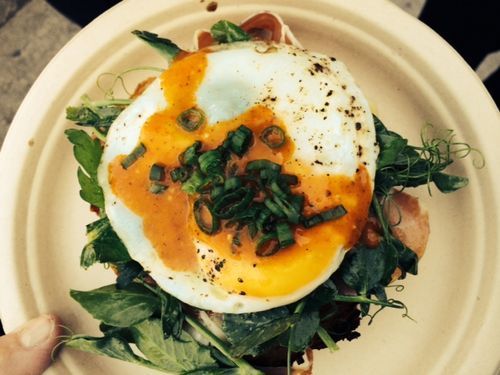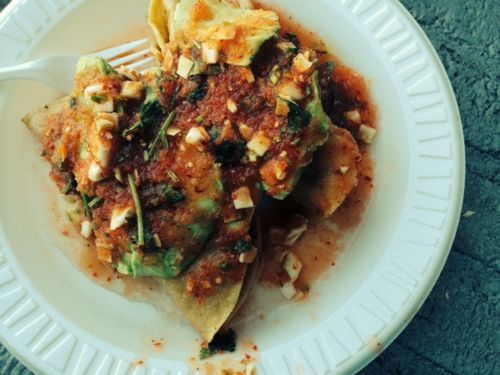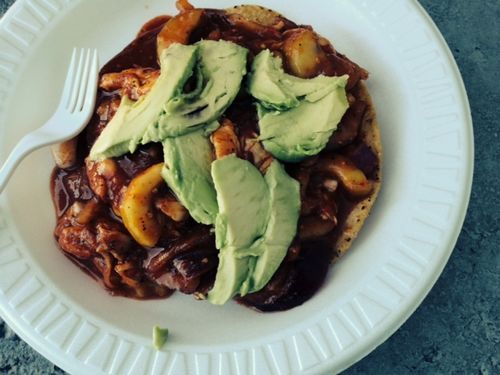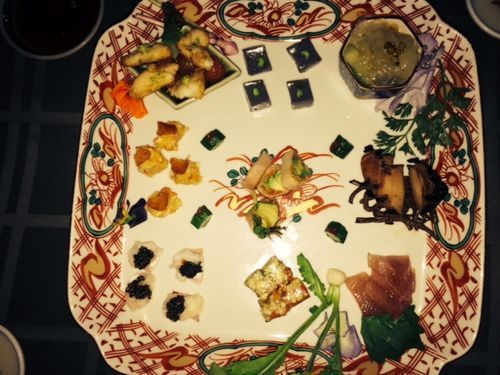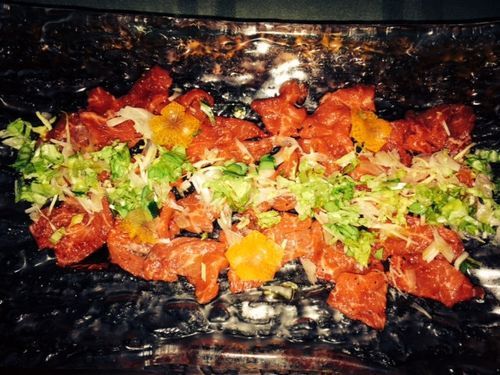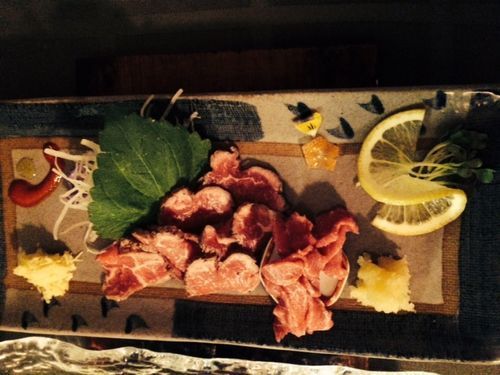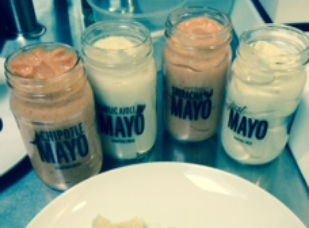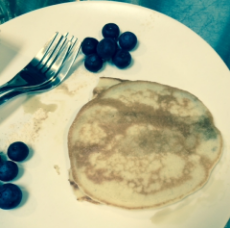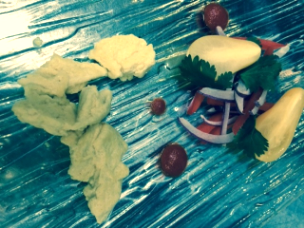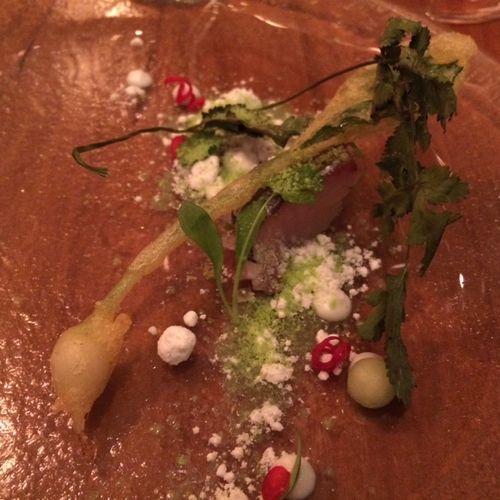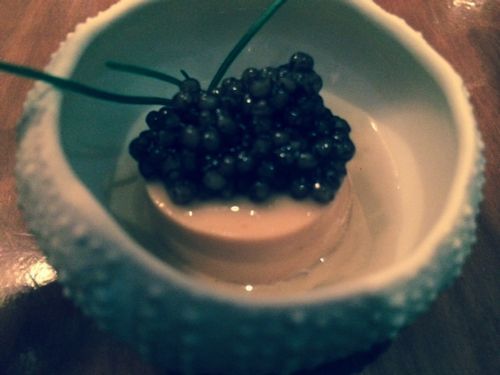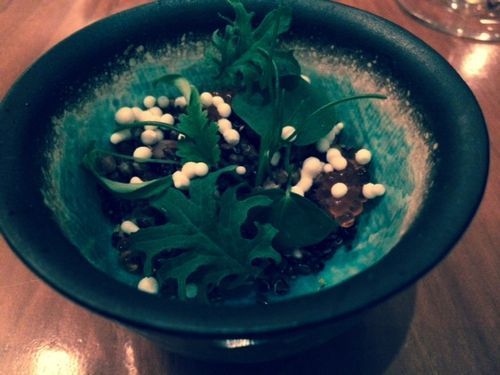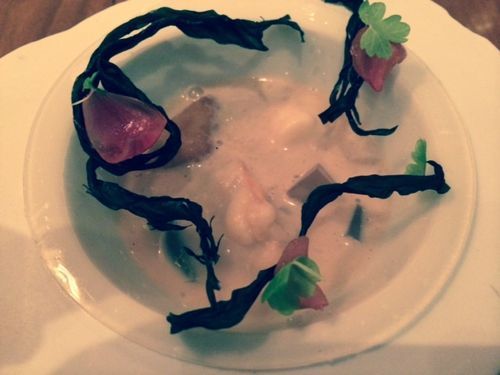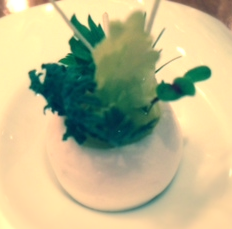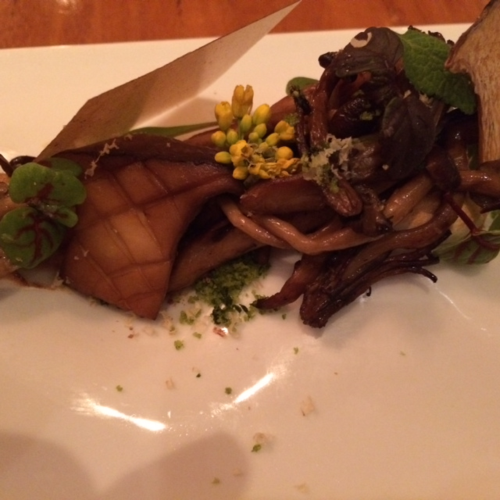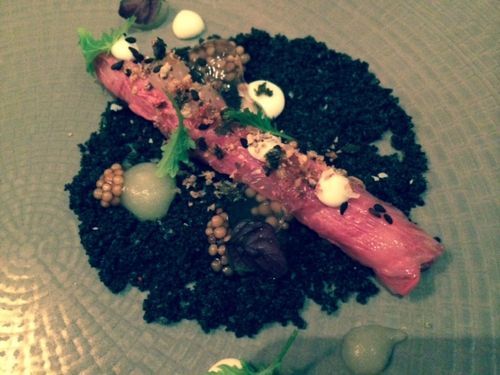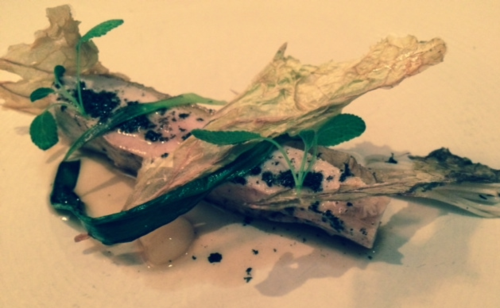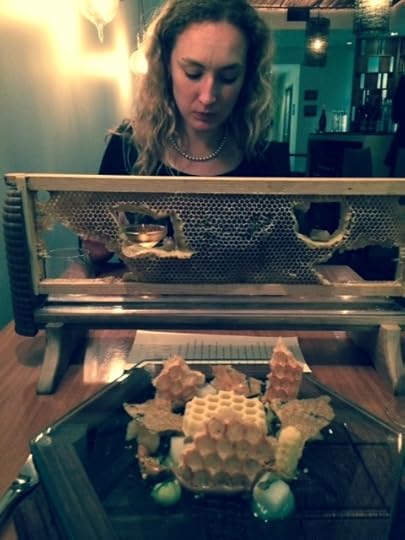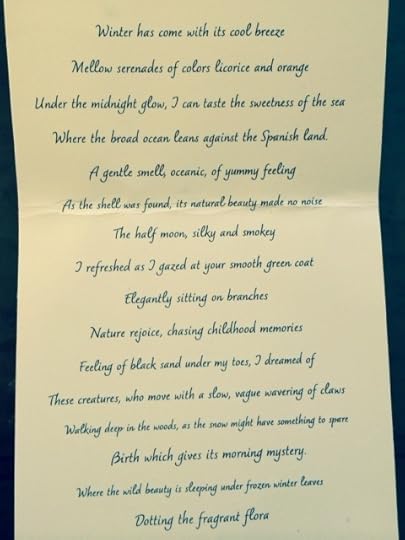Ruth Reichl's Blog, page 31
February 17, 2014
Paula Wolfert
Paula Wolfert has been an inspiration to so many of us. Her first book, on Moroccan food, was groundbreaking. When I traveled with her I discovered that she has the most remarkable palate of anyone I've ever met. And her cookboos are beautifully researched and absolutely reliable. When I heard that she’s been diagnosed with Alzheimer’s disease I was stunned and saddened.
But Paula never does anything by half measures. She's a fighter. In typical Paula fashion, she’s become a leading spokesperson for Alzheimer’s.
To support her, a group of chefs including Mary Sue Milliken, Susan Feniger, Farid Zadi, Nancy Silverton,and Robbie Richter are creating a Mediterranean Feast for Paula in Los Angeles on the afternoon of April 27th to benefit the Alzheimer’s Association.
The menu will feature recipes from Paula’s many books. The chefs are planning to roast a whole lamb, make Tunisian briks, bisteeya and Berber couscous. The eclectic menu also includes, porchetta, paella, bouillabaisse, rabbit with preserved pears and ginger, duck with green olives and herbes de Provence.... it is kind of an endless feast.
There will be an auction as well. Donations from chefs and cookbook authors are still coming in, but at the moment they include:
Signed cookbooks from Mario Batali.
Eating tour of Rome from Elizabeth Minchelli.
Cooking classes from Suvir Saran.
A French butchery class from Farid Zadi.
Tickets are $75. The event takes place on Saturday, April 27th from noon to 4 in L.A.
Tickets at: http://mediterraneanfeast.tumblr.com/
February 16, 2014
The Taco Crawl
We had good intentions. We were going to meet at the Guerilla Taco Truck at 11, then go on to four or five more taco places. The problem was that the Guerilla Tacos were so damn good we had to try them all.
Guerilla Tacos are not your ordinary tacos. They’re high end, chef-driven tacos. Chef Wes Avila trained with Alain Ducasse and he’s worked at fancy kitchens across L.A. There are no plebian ingredients at this particular truck: it’s all local, sustainable, organic.
First up - and my hand’s down favorite - the pork taco. The pork, from Cook Pigs Ranch was crisp, rich, filled with fat and flavor. Snuggled inside the taco with homemade salsa, some sliced radish and a few fronds of cilantro it was.... perfect.
But the others were impressive too.
This kampachi-blood orange version looks more like the amuse bouche at Daniel than something you just purchased on a grubby sidewalk east of Downtown L.A. You need to eat it correctly though; get too much of the crisp corn tortilla and it overwhelms the delicate fish.
Broccoli, a lovely tangle of various flowering vegetables may look vegetarian, but the chef sneaked some crumbled sausage in as well. A delightful little shock when you suddenly get a pungent bite.
The Elegant Italian taco (my name, not theirs) is built on a brioche base. On top: proscuitto, egg, scallions, pea shoots.
There were more: a sunchoke version, with lots of caramelized onions. Grilled sardines, fat, vinegary, a solid meal. Various burittos with sausages and eggs. We ate them all.
And then stopped, looking at each other with a certain horror. We were supposed to hit four more places. We couldn't.
But, just for science, we went on to Boyle Heights and a taste of Mariscos Jalisco. And that was where we encountered what will forever be the tostada of my dreams.
Tostada de cameron. Crisp taco shell. Tender shrimp. Perfect balance. Irresistible. They're $1.75 each. This is two. Full disclosure: I ate every morsel.
And then, because the tostadas were so good, I had to order this taco de aguachile. Hot. Hot. Hot. The yang to the yin of the hamachi taco at Guerilla. The flavor was singing in my mouth the whole drive home.
February 15, 2014
The Secret Beef Place
Totoraku, Los Angeles
This is one of those places people whisper about. “You mean you really got in?” They look at you suspiciously. “How?”
The restaurant is so wary of unknown customers that it disguises itself as an empty storefront. It doesn’t take reservations. If you somehow get the phone number, the woman who answers will tell you they are fully booked. Forever.
But if you know someone, who knows someone....
First off, it doesn’t look like much. The kitchen occupies half the restaurant, the tables are modest, and the odd screens shielding the tables look as if they were rescued from a hospital that went out of business in the fifties. Dusty (empty) bottles of (very fancy) wine (red), sit on top of the wall separating the kitchen from the dining room. This then, is all about the food.
All about the beef, in fact; this is a meat-eater’s paradise, the meal I wanted to have in Osaka, the meal I couldn’t get because I could not make myself understood in that city’s equivalent of this restaurant. Although we were able to procure a reservation for the Osaka restaurant, we got there to discover that nobody spoke English. We ordered by pointing at the food on other people’s tables. All I can say is - we ordered wrong.
At Totoraku, however, you don't order. You bring your own wine, and they bring you food. Last night's meal went like this:
This elegant platter of tiny tastes is the one non-meat offering. It contains (amon other little tidbits) a tangle of shrimp topped with caviar, fragrant Japanese uni, crisp abalone, sesame tofu, wild yellowtail, delicate little avocado rolls and a dish of pickled cucumber topped with crisp bits of jellyfish.
Tender slices of raw beef.
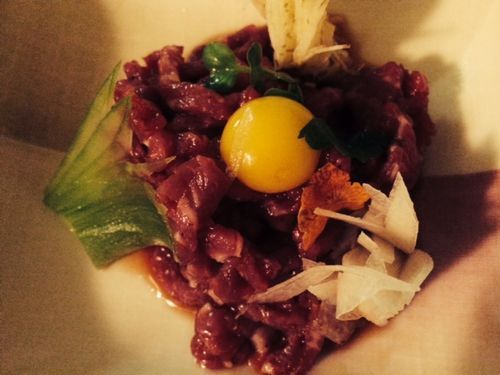
Beef tartar in the Korean style: cold squiggles of beef with Asian pear, sesame and a quail egg yolk.
More beef, served with grated horseradish and a garlic paste. The joy here is the raw beef on the right, which comes from the throat; smooth and silky, with the texture of toro, it simply evaporates in your mouth.
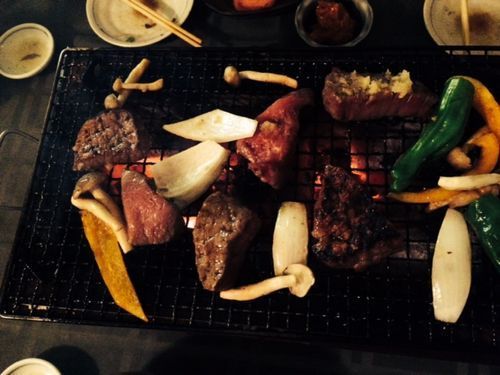
Now the hibachi comes out, along with a parade of different cuts. I'm sorry to say I liked the soft, rich slices of tongue so much that I forgot to photograph them. Then there was this platter of filet mignon - the least impressive meat of the night - with lovely vegetables to grill. (There was also, full disclosure, a basket of raw vegetables, some marinated tomatoes, and a miso-based sauce to dip them in.)
Outside ribeye (this is the long muscle on the outside of a ribeye, which many consider the single best piece of meat on the animal).

Inside ribeye - fascinating, the different texture of this cut.
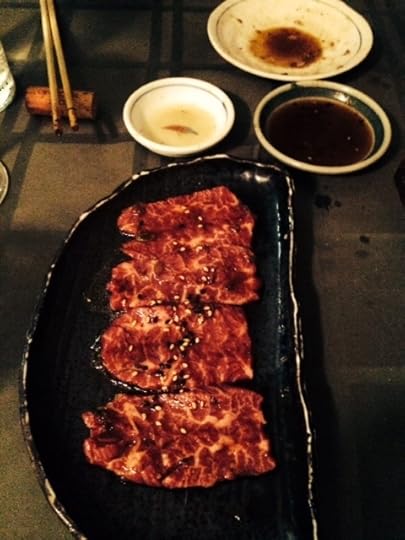
Boneless shortrib - my favorite of the lot.
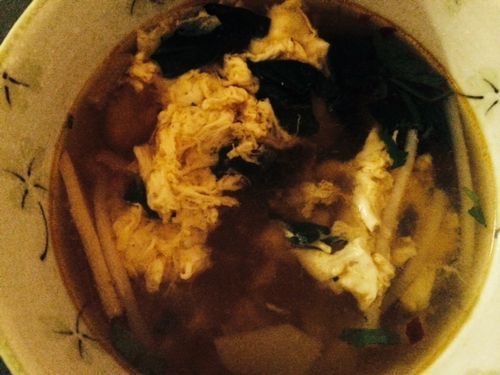
And finally, the soup with a bit of egg, spinach, and just a tiny scoop of rice. A perfect ending to the meal.
There was completely unnecessary sorbet for dessert. In the end, what you remember is the meat. Chef Kaz Oyama won't say where ihe sources it, but it was, truly, spectacular.
t
February 12, 2014
Recipe for a Snowy Day
I'm sitting in sunshine, but an eastcoast friend has just asked for my garlic bread recipe; it is, he says, the only thing that will cheer him up.
What a good idea. It's hard to be gloomy when garlic bread is broadcasting its seductive smell throughout the house.
These days it's both easier and harder to make a great loaf of garlic bread than it once was. Easier because good bread is everywhere. Harder because the influx of cheap, imported garlic has made good garlic an increasingly rare commodity. Try to find garlic that looks young and fresh, and squeeze it to make sure it isn’t shrinking inside its skin. You don’t want old garlic because when it starts to sprout it gets nasty and very bitter, ruining everything it comes in contact with. You know the terrible taste I’m talking about. If you can’t get your hands on good garlic, the only remedy is to go through your garlic, clove by clove, removing the bitter green sprout in the center. It’s painstaking work, but it’s worth it.
There are four other tricks to making great garlic bread.
1. Use a lot of garlic, but really cook it for a while so it’s not raw and biting.
2. Melt the butter–don’t just soften it—and brush it liberally across the bread. When you think you’ve used enough, use more.
3. Bake it twice: Once to get the bread warm and completely infused with the garlic butter. And again, at a higher temperature, to toast it to crisp, golden, crunchiness.
4. Garlic bread should taste most of garlic and butter, but I love the complex flavors and spring-like look you get by adding lemon zest, parsley, or chives. But my favorite addition is a quarter cup of freshly grated parmesan cheese, added just before it goes under the broiler, which makes this truly, decadently, delicious.
GREAT Garlic Bread
1 loaf sturdy French or Italian bread
1 stick sweet butter
1 head garlic
Zest from 1 lemon (optional)
¼ cup freshly grated parmesan cheese (optional)
2 tablespoons chopped parsley or chives (optional)
Cut bread and preheat: Begin by cutting the bread in half, lengthwise (a serrated knife helps). Preheat oven to 350⁰ F.
Prep garlic butter: Peel and finely chop the garlic. (For an easy way to peel garlic, drop the cloves into a pan of boiling water for 10 seconds, which will loosen the skins.) Melt a stick of sweet butter, and add the garlic.
Slather bread: Slather the garlic butter onto the bread, cut side up, with a brush. Let it soak in. Use it all, and evenly spread the bits of garlic all over. Now is the time to salt it if you want to, and to sprinkle on the zest.
Bake: Bake the loaf, cut sides up, 15 minutes.Take the bread out now and do the final step just before serving. Turn the heat up to broil. Add cheese, if using. Broil for about 2 minutes, watching carefully to make sure it doesn’t burn. Sprinkle with herbs just as it comes out of the broiler and serve immediately.
February 9, 2014
Lemonade!

I wish you could smell these lemons! They're so intense that I've perfumed the entire house with their fresh yellow fragrance.
I'm making what I think is the world's best lemonade.But first, a few notes.
The most important thing to know about lemons is that the best flavor is in the peel, which contains all that wonderful lemon oil. If you’re going to take advantage of this, buy organic lemons or scrub your lemons well before using them.
But here’s the problem: just below the bright yellow zest is the evil pith, the spongey white part of the lemon which is bitter. That’s the part you want to avoid; if you crush it into your lemonade within a few hours you will end up with an unpleasantly bitter drink.
Simple syrup is one of the secrets to great lemonade. It is nothing more than sugar dissolved in water so that the sugar will sweeten the lemon juice, rather than fluttering down to the bottom of the glass and sitting there glumly all by itself. If you infuse the lemon zest into the syrup, you get all the complexity of the zest with none of the bitterness of the white.
You’ll need a lot of lemon juice, so you want to get as much juice out of each lemon as you can. If you’re lucky, you’ll get about a quarter of a cup of juice out of each lemon; if you’re stuck with unfortunate lemons you might need as many as six for a cup of juice. Increase your chances by rolling the lemon around on the counter beneath your palm to break down the cells inside the fruit; it will give you more juice.
If the lemons seem hard and unforgiving, microwave them for 20 seconds. This will shock them into relaxing, just a little.
World's Best Lemonade
1/2 cup sugar
1/2 cup water
4-6 lemons juice, enough to make a cup of lemon juice
2 cups water
With a sharp knife or a vegetable peeler, remove the zest from the lemons, being careful not to get any of the white pith.
Mix the sugar and water in a saucepan and bring to a boil. Simmer, stirring, until the sugar is dissolved. Remove from heat, throw in the lemon zest and allow to cool.
Juice the lemons until you have a cup of fresh juice.
Strain the sugar syrup; it should be a lovely yellow. Add half to the lemon juice, along with the water, and keep adding more until it is sweetened to your taste. (I prefer mine quite tart. The strained syrup will keep almost indefinitely in the refrigerator.)
Pour over ice cubes and serve.
February 8, 2014
A Vegetarian Egg?
When I was in San Francisco I stopped by Hampton Creek Foods to investigate their “vegetarian egg” project. It’s a fascinating look into the future.
The tech startup, funded partly by Bill Gates, is intent on making an egg out of vegetables. Their one-room office south of Market is as unusual as the egg they’re trying to make. Part Geek City, part Julia Child’s kitchen, part Mad Scientist’s lair, it’s a collision of home ec, Silicon Valley and science. In one corner chefs are baking cookies and flipping pancakes; in another scientists are doing arcane experiments with test tubes and centrifuges. And in the middle nimble young people are tapping furiously on their computers. A dog sleeps on a sofa.
The idea, they tell me in a quick intro, is to do away with battery chicken facilities, which torture the animals (well, you’ve seen the pictures), create huge environmental problems (greenhouse gasses, monumental piles of manure), require antibiotics, and are prone to disease like avian flu. Oh yes - and they’re expensive. Their "eggs", they say proudly, will be environmentally sound, disease-free, farmer-friendly - and cheaper.
The point is very much the one Frances Moore Lappe made more than forty years ago in Diet for a Small Planet: there is something insane about using huge amounts of usable protein (in the form of feed grain) to get a very small amount of usable protein (in the form of meat). Why not just eat the grain instead?
The smart part is that they’re not trying to create an egg that you would boil or fry; they’re trying to create an egg that’s an ingredient. And their first product, Just Mayo (already for sale at Whole Foods), is very convincing. It’s delicious mayonnaise.
Now they’re working on eggs you can use in pastries. The pancakes chef Chris Jones (you might remember him from Top Chef), made with one of the products isn’t the best pancake I’ve ever tasted - but it isn’t the worst. Put enough syrup on it, and few people would complain.
The egg that they “scrambled” needs a lot more work. It was grainy, with a slightly sour taste. Still, put it in a breakfast sandwich with a slice of sausage, and you’d probably never notice that it wasn't really an egg. And I couldn’t help be impressed by the notion that it is 100% vegetable.
What vegetable? The scientists won’t say, although the label on their mayonnaise mentions "pea protein." They’re working with a variety of legumes and beans from all over the world in an attempt to find various proteins that will mimic the emulsifying and leavening action of eggs.
They’ll never replace a great boiled egg. But as a substitute ingredient in what has become America’s most popular condiment (mayo has apparently just beaten out both catsup and salsa) - well, it’s bound to save a lot of chickens from a miserable life.
February 7, 2014
Notes from San Francisco: Atelier Crenn
I didn’t know what to expect.
This is what I knew: Dominique Crenn was a San Francisco chef who is always mentioned when the subject of “women chefs” is raised. She had many stars from local critics in San Francisco, and two from the Michelin people. And she writes menus that are poems.
This is what I found: a small, spare, elegant but rather modest room filled with the electricity of expectation. It feels hopeful, the way a theater does, just before the curtain rises.
And theater is what you get. I love this kind of dining, where the chef is walking a tightrope, taking risks, pushing you to explore tastes and textures that you’ve never before experienced. There were dishes I loved and some I hated, but in the four hours I spent at the table, I was never bored. It was like taking a wonderful journey, exploring new territory, and I walked out the door utterly exhilarated.
Here are a few of my favorite moments of this particular trip. (Apologies for the pictures; I was having too much fun...)
The meal begins with a tiny bonbon of a drink. An adorable edible Kir, a little flavor bomb that explodes into your mouth in a whoosh of liquid. Apple, chocolate - and a total surprise.
And then the parade of tiny dishes begins.....
Under the midnight glow I can taste the sweetness of the sea: a tiny uni custard topped with caviar (in a ceramic sea urchin shell)
Nature rejoice, chasing childhood memories.
Snap, crackle and pop! Maybe my favorite dish of the evening, this reimagined cereal combines crunchy grains, cool herbal leaves, lovely trout roe. Textures and temperatures do somersaults in your mouth. Fantastic!
These creatures who move with a slow, vague wavering of claws
No wait, this was my favorite course: Hands down the best seafood chowder I've ever tasted. Hard to believe that so many flavors and textures are hiding in that little bowl of soup.
Elegantly sitting on branches.
You can hardly see them, but at each end of this branch is a tiny carrot that has been much manipulated until it is reduced to the ghostly essence of itself. A fascinating little tidbit.
and
Dotting the fragrant flora; Ms. Crenn's whimsical little salad.
Walking deep in the woods, as the snow might have something to spare.
A delightful tangle of mushrooms, and utterly irresistible.
Feeling of black sand under my toes.
Wagyu beef as it should be served: one extremely satisfying bite. Okay, maybe two.
Where the wild beauty is sleeping under frozen winter leaves.
The wild beauty being the most delicious bit of bird.
And finally, an edible encyclopedia of honey, all comb and crunch.
Afterward there were lollipops, chocolates and as a finale, a little fluff of mint cotton candy, that leaves you with a laugh.
Fantastic pairings of wine, sake and beer as well. My particular favorite: that fantastic old white Rioja!
February 2, 2014
Another Taste of Thailand
Dinner at Night + Market
The last time I had food that tasted like this was not in America, but in Laos, where I learned to rethink what I considered edible, to respect every possible source of nutrition. It reminded me that most of the Thai food we get here comes from very high up on the food chain.
You can go to Night + Market and eat delicious food that will make you happy and ask very little of you: sweet and spicy chicken wings, crab fried rice, pad thai and fiery curries. But if you’re an adventurous eater, there are flavors here that will really stretch your taste boundaries.
Some highlights from last night’s dinner:
Rice cooked with pork jowl and blood, and steamed in a banana leaf. Dark, funky and totally delicious, this is the manliest fried rice you’ll ever eat. I loved it.
Fried pig tails. If you told your friends that they were eating a newly discovered part of the chicken, they’d absolutely believe you. Nothing scary here: rich, fatty, sweet, spicy, these little tidbits are so much fun to eat. Utterly addictive.
Liver ceviche. This is liver as you have never had it before. Lightly cooked, the triangles are dressed in lime, fish sauce, chiles and herbs, which unapolgetically underline the essential nature of liver.
Catfish, pork fat, chiles and herbs wrapped in banana leaves and baked until the fish becomes as soft as custard. A bracing take on the rather tame hor mok; I couldn’t stop eating it.
Grilled strips of hog collar - wonderfully fatty - to dip into a jaew - the pounded chile paste that is the staple food of northern Thailand.
And finally, the most luxurious pork hock, slowly cooked in a dark soy concoction, deep, sweet and incredibly intense. That soy sauce tasted as if a million spices had gone swimming through and left their flavors in their wake.
Night + Market shares a space with Talesai, which was a pioneer in the eighties, bringing a new elegance to Los Angeles Thai restaurants. The latest member of the family is an indication of how much things have changed. This loud hip restaurant offers Thai food for an adventurous generation that has been to Thailand and understands that this cuisine has a whole host of new flavors available to anyone willing to take the next step.
February 1, 2014
More Notes from L.A.
Had dinner at Rustic Canyon Wine Bar the other night with a group of friends so interesting that I didn’t really focus on the food. I knew I liked it, but we were talking, and the place was so pleasantly casual that the food went past me like a dream. It did what good food is supposed to do; made a really good gathering better.
But the next day the dishes came back to me, one by one, and I began thinking that the meal hadn’t just been delicious; it was exciting. Chef Jeremy Fox has a fascinating food mind; he puts unexpected flavors together, teasing out a whole new way to experience ingredients. He thinks about textures too. His pork trotter, for instance, is a gloriously unctuous mess, rich little nuggets of flavor on a yuzu aioli. Crisp. Chewy. I’ve never had anything quite like it.
His beet and berries is another stunner. Quinoa with big chunks of beets and invisible strawberries that completely permeate the dish. I kept eating, almost unconsciously, thinking, “Why does this taste so good?” And then I’d take another bite, and then another.
But the dish I couldn’t stop eating was the tiny potatoes in giblet gravy. The potatoes were so delicious - some crisp, some soft, and served with something that seemed closer to a savory pudding than any gravy I’ve ever known. It’s hard to do something new with potatoes, but Mr. Fox has done it.
Now I can’t wait to go back and really focus on the food. What did I miss?
Went back for lunch at The Hart and The Hunter too. I might be addicted to that kale salad, with its apple, its caramelized pecans and its restrained bit of cheese. As for those biscuits.....
January 28, 2014
A Few More L.A. Tastes

Sitting at G&B Coffee in the Grand Central Market, after eating lemongrass-laced Thai sausage with sticky rice and papaya salad at the Sticky Rice stand, drinking this impeccable little macchiato, thinking about all the wonderful food I've been eating while I've been here.
A few high points:
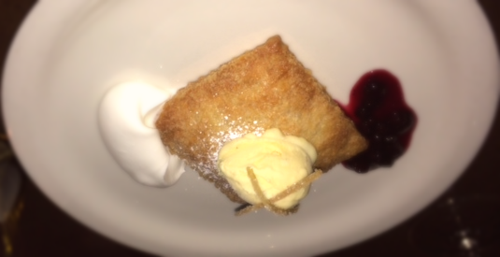
What might be the platonic ideal of lemon tarts at Cooks County (where all the food is a complete delight). Still thinking about that crust.....
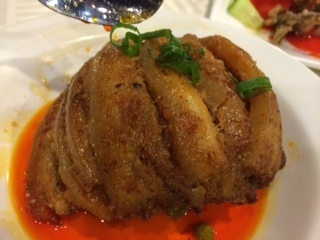
Flour-steamed pork at Chengdu Taste (can't wait to go back).
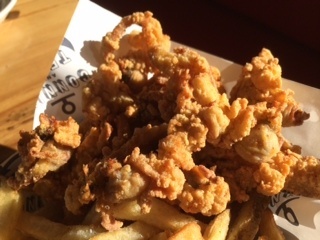
Fried Clams! Fried Clams! Fried Clams! at Connie and Ted's

Not to mention these gorgeous shrimp.
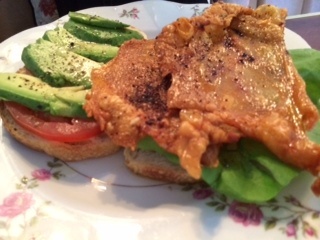
Chicken skin and avocado sandwich at The Hart and The Hunter
The great cocktails at Mud Hen Tavern (my Iphotos are so dark I'm afraid of being accused of taking worse pictures than you know who....). And everything I ate at Jitlada, where I was so busy devouring raw crabs with papaya salad, noodles with pork and a fiery nam prik rich in tamarind, that I completely forgot to take pictures.
Next time I'll do better.
Ruth Reichl's Blog
- Ruth Reichl's profile
- 2980 followers


